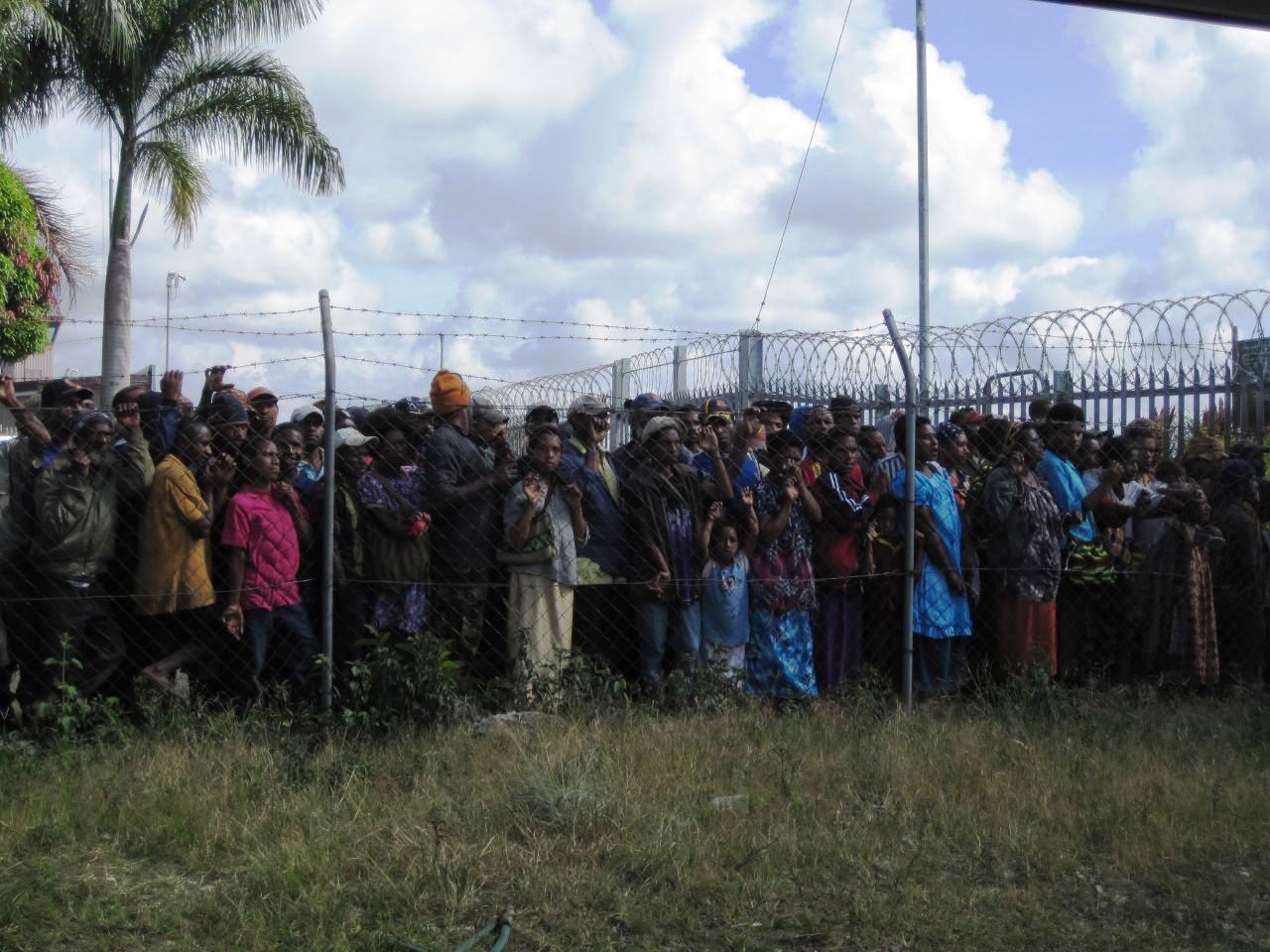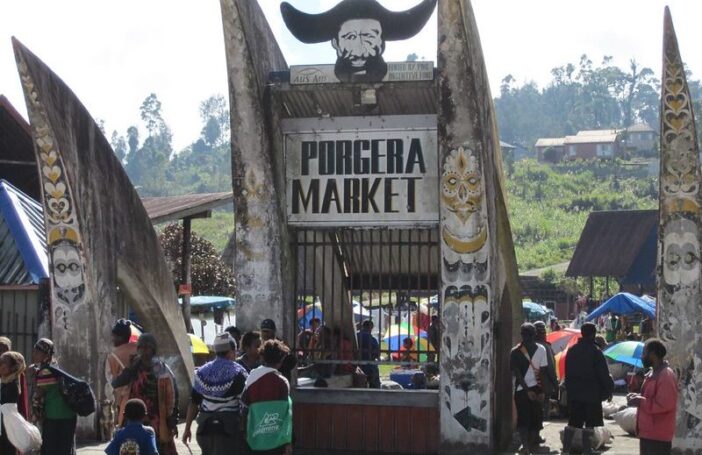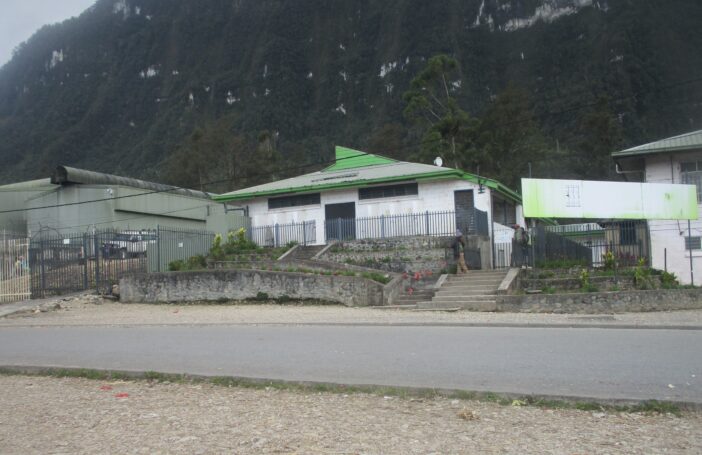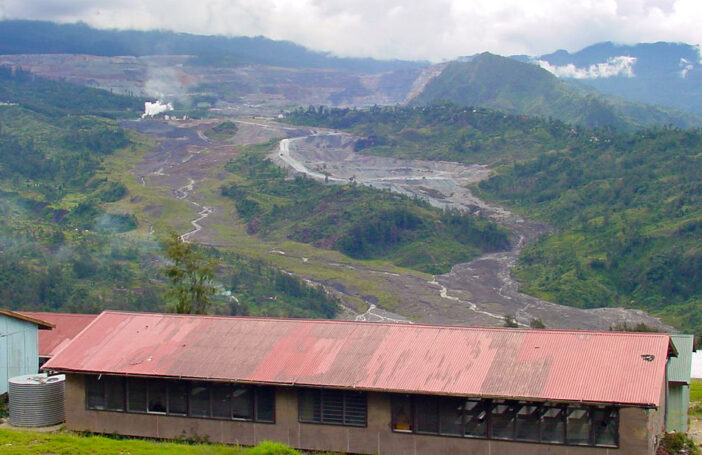The last three decades of goldmining in Porgera (1989-2019) have been wasted, with little to show in terms of the socio-economic conditions of the landowners and people of Porgera-Paiela district in Enga Province, which hosts the giant goldmine. I have written previously about the curse Porgera goldmine has brought on the people, including heightened lawlessness, deteriorating basic government services, missed opportunities in education, destruction of arable land forcing the landowners to depend largely on mine royalties for survival, and infighting among leaders of landowners for control of mining benefits.
The mine closed in 2019 when the mining lease expired, but it is planned to reopen. The mine will likely restart operations soon as most agreements needed were signed on 16 October 2023. After renegotiating terms of ownership, the mine will now be majority-owned by PNG stakeholders (51%), with the landowners given 10% of equity (or ownership) for free.
The landowners will receive an estimated K2.5 billion from the 10% equity over the next 20 years when mining resumes. With other benefits such as contracts, special support grants and mining royalties, large sums of money will flow to the landowners.
The landowners have launched a company to provide mining services, but there are no proper governance mechanisms in place to manage and invest the large amounts of mining proceeds, particularly to sustain the landowners’ and the entire district’s long-term future beyond the mine.
This is a fundamental failure of all parties: the national government, the mining company, the landowners, and the provincial government. Without these mechanisms in place, the mining curse will not be lifted. What will be left behind after the mine has closed will be a huge crater in the ground, a forgotten township, and people still living in poverty, struggling to access basic public services. If the last four years since the mine closure in 2019 is anything to go by, the future for Porgera landowners and the Porgera-Paiela district is gloomy.
However, there is currently a small window of opportunity. I propose three urgent initiatives to help lift the curse and chart a sustainable future for landowners and the people of Porgera-Paiela.
First, establish a long-term fund which will fund the socio-economic development needs of the landowners and the district for perpetuity after the mine closes.
This can be modelled around the PNG Sustainable Development Program (set up using the proceeds of Ok Tedi mine) and Lihir Development Investment Limited (established with the proceeds of Lihir mine for Lihir landowners). It should not be part of MRDC, the company that currently manages the landowners’ equity share. Rather, the long-term fund needs strong governance and accountability, including an independent board to protect it from unscrupulous people. It must be set outside of PNG to provide it with legal protection.
I am aware that a fund called the Porgera Sustainability Fund will be established by the mining company. However, it will cease to exist beyond the mine, and will mostly duplicate the roles and responsibilities of existing government agencies in the district. The funds which are being earmarked for the Porgera Sustainability Fund should be invested instead in the long-term fund. The long-term fund can assume most of the roles of the proposed Porgera Sustainable Fund.
Second, strengthen and streamline public agencies in Porgera-Paiela.
Currently, there are two key government agencies in the district that are supposed to provide public services, namely the Porgera Development Authority (PDA) and the Porgera District Development Authority (PDDA). There is significant duplication between these agencies.
PDA receives part of the mining royalties annually, as well as special support grants from the national government, to fund its operations and to provide basic infrastructure and services in health, education, law and order, and economic projects. However, PDA has been plagued with huge governance issues – its books have not been audited for many years. There have been many leadership tussles. As a result, there is little trace of development on the ground for the large sums of money PDA has received over the years.
The PDDA has been set up recently as part of a national reform. Nationwide, Members of Parliament (MPs) direct funding from the District Services Improvement Program (DSIP) to priorities determined by the MP who is the chair and head of PDDA. The PDDA is controlled by the MP of Porgera-Paiela electorate, and its main source of funds is determined by the national government. This means allocation of resources can be influenced by political affiliations both at the district and national level.
The PDDA and PDA will need to sit together, make sure their roles are properly demarcated, and the governance and accountability mechanisms of each agency strengthened to ensure full accountability of the funds each spends, so that basic public services reach the people.
The PDDA and PDA will fund socio-economic development of the landowners and the district while the mine is in operation, while the proposed long-term fund would fund their future development needs in perpetuity, beyond the mine.
Third, reform and strengthen the SML Children’s Trust Fund, which was established to fund the education of Porgera landowners’ families.
As proposed in my last blog, the SML Children’s Trust Fund, including its management, must be reviewed and reformed and stringent control and accountability requirements set in place. An independent board must be entrusted to oversee the governance of the trust fund, and a merit-based scholarship award system established to ensure students put in the effort at school. The long-term fund would be able to fund the SML Children’s Trust Fund when the mine closes for good.
In the haste to reopen the goldmine, the key parties to the mine have completely overlooked the importance of establishing proper governance measures to better manage proceeds and benefits of the mine for the next 20 years and beyond. If relevant corrective measures are not taken in the next few weeks, the future of Porgera landowners and the people of Porgera-Paiela district will be irreparably damaged.





For the yesteryears, Porgera SML landowners were the ones who dreamed of living in Cairns Australia and accused a man Like Kurubu Ipara for wasting funds on sustainable projects and programs in Porgera Valley. Kurubu Ipara was true leader, who was visionary, patient and courageous enough to change our world for better, but we failed. I think, all the major services Wabag District have now would have been ours. Why don’t we just let Kurubu Ipara lead us for another round?
Thanks Jacob for your feedback. Porgera-Paiela district surely needs visionary and upright leadership that would ensure strong administrative and governance mechanisms are in place to better administer mining benefits and other public resources of the district. Importantly, it (leadership) must be neutral and be able to work with ALL stakeholders. They must be recruited on merit as well.
Only if he has comparative thinking to overcome National fiscal policy that is giving priority to the politicians to become major stakeholders to the Porgera Mine. For instance, 51% of ownership is mainly by politicians. From 51%, there should be a different long-term investment fund to cater for next 20 -50 years time. Because, I don’t think PDDA or PDA’s trust account can sustain development for Porgera Payala in the future. Such long-term investment fund should be checked by external auditors every year as mentioned by Andrew Anton Mako above. Through this long-term investment, Porgera Payala and Enga Province would have economic prosperity in near future. Please, let’s do away with these politicians who are becoming main shareholders but have no long-term investment plans.
Thank you Christopher.🙏🏽
The bitter fruits of adversaries today is caused by the “1989 Porgera SML Agreement” signed between the PNG Government, The 24 SML Landowner Agents and PJV-Placer Dome. The main negotiation team that brought all parties together to sign the MOU was lead by Mr Kurubu Ipara and Mr Johnathan Paraia.
In actual fact the Porgera Gold Mine Agreement was a blunder and lead all Ipili people to suffer the outcomes today.
Even the illegal mining known today is another failure caused by the agreement signed in 1989, as well as the human rights abuses and environment degradation issues, which is well known as the “Porgera Gold Mine Legacy Issues” today.
The PNG National Government must bring the main negotiators who are still alive today to discuss the 1989 Porgera Gold Mine Agreement and compare to the new agreement to make slight changes from bottom-up level perspective. A proper dialogue system must be established to discuss all Porgera Gold Mine issues. The PNG Mining Act must be drafted and must be compliance to the United Nations Guiding Principles On Business and Human Rights.
Plainly stating the challenges ahead. The Ok Tedi model is not working efficiently and effectively as well. I would propose a broad based economic development package tied to the CDA or MOA for the government and the company to fund. It should be independent from the mine so that it will continue to operate without any problem posting mining. Our strategic location is our advantage.
Hi Vincent, thanks for your comment. Agree with you that CDA and MOA are the remaining opportunity to put in place a fund that will carry the landowners and Porgera-Paiela district’s socio-economic future beyond the mine.
PNG SDP had more than US1.547 billion (about K5.74 billion) in 2022. This will continue to grow and will fund key social and economic development projects/services for Western Province in perpetuity. It has strong governance mechanisms, including an independent board. This is the type of fund that needs to be established to support the landowners and the district when gold eventually runs out on the mountain in Porgera.
The commentary and the proposals are spot on, and unless well educated and industry experienced leadership are at the helm of those (named local institutions & others) to change the course of the Golden District’s destiny, the predicted doomsday is eminent!
It is not possible to expect a different outcome by the same people doing the same things done in the last 30 years.
Hi TimA, thanks for your comment. I agree with your point on the importance of good and upright leadership on key agencies of the district, which must be recruited on merit for better management of public resources and mining proceeds.